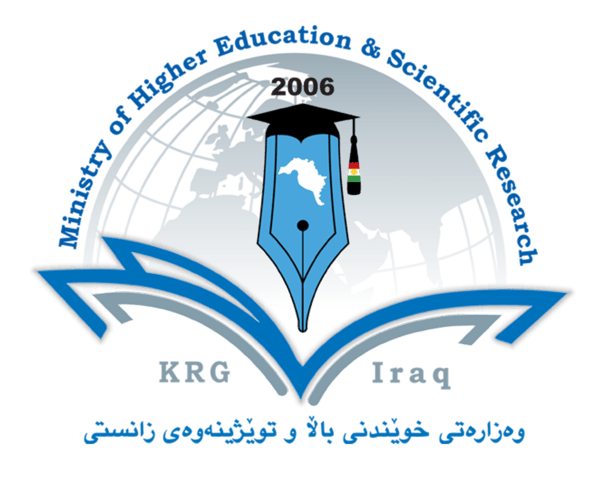Pattern, clinical and laboratory features from of adult acute lymphoblastic leukemia patients from Kurdistan-Iraq
DOI:
https://doi.org/10.56056/amj.2019.101Keywords:
Acute lymphoblastic leukemia, Adults, Clinical, HematologicalAbstract
Background and objectives: Acute lymphoblastic leukemia is a heterogeneous group of neoplasm resulting from clonal proliferation and tissue infiltration by leukemic lymphoblasts. Adult acute lymphoblastic leukemia is character- ized by distinctive clinical and genetic features in comparison to childhood leukemia. This study aimed to outline the clinco-hematological features of adult Iraqi patients newly diagnosed with acute lymphoblastic leukemia in Kurdis- tan-Iraq.
Methods:This study was conducted at Hiwa Cancer Hospital in Sulaimani City and Nanakali Hospital in Erbil City, Kurdistan, Iraq. A total of 109 patients of newly diagnosed acute lymphoblastic leukemia aged >15 years were included. Clinical history, physical examination, complete blood counts, with peripheral smear, bone marrow aspira- tion and immunophenotypic data (using flow cytometry) and genetic study were collected for all the enrolled cases.
Results: The median age at diagnosis was 24 years with male to female ratio of 1.7:1. B- lineage was predominant at (76.1%), while T -lineage was less frequent, at 23.9%. Mean hemoglobin level was 9.1 g/dl (+2.3) with a range of (4-15.2) g/dl, white blood cells count had a range of (0.4-300) ×109/L, with a mean of 47.5 ×109/L (+62.5). The mean platelet count was 79×109/L (+83), and a range of (3-490) ×109/L. Fifty eight patients (53.2%) presented with lymphadenopathy, and seventy eight patients (71.6%) had organomegaly. Philadelphia chromosome was detected in 9.5% of cases. Fifty seven (52.3%) patients stra tified into high risk group.
Conclusions: Patients from our locality have some distinct disease characters from that were reported elsewhere.
Downloads
References
Terwilliger T, Abdul-Hay M. Acute lymphoblastic leukemia: a com- prehensive review and 2017 update. Blood Cancer J 2017; 7(6), e577. http://doi.org/10.1038/bcj.2017.53.
Inaba H, Greaves M, Mullighan CG. Acute lymphoblastic leukemia.Lancet 2013; 381(9881):1943–55.
Jaafarr FH, Kadhom AE. Expression of CD45, CD34, CD10 and human leukocyte antigen-DR in acute lymphoblastic leukemia. Iraqi J Hematol 2018; 7:14-9.
Faderl S, O?Brein S, Pui CH , et al. Adult lymphoblastic leukemia: concepts and strategies. Cancer 2010; 116(5):1165-76.
Aziz SA, Sharma SK, Sabah I, Jan MA. Prognostic significance of cell surface phenotype in acute lymphoblastic leukemia. South Asian J Can- cer 2015; 4(2): 91-4.
Jalal SD, Al-Allawi NA, Al Doski AA. Immunophynotypic aberrancies in acute lymphoblastic leukemia from 282 Iraqi patients. Int J Lab He- matol 2017; 39(6):625-32.
Rowe JM. Prognostic significance in adult acute lymphoblastic leu-kemia. Brit J Haematol 2010; 150: 389-16.
National Cancer Institute, Surveillance, Epidemiology and End Re- sults Program. 1975-2008.
Charafeddine KM, Hatoum HA, Otrock ZK, et al. Long-term outcome of adult acute lymphoblastic leukemia in Lebanon: A single institution experience from the American University of Beirut. Hematol Oncol Stem Cell Ther 2009; 2(2):333-9.
Kim DY, Park HS, Choi EJ, et al. Immunophenotypic markers in adult acute lymphoblastic leukemia: the prognostic significance of CD20 and TdT expression. Blood Res 2015; 50(4): 227-34.
Hamid TA, Mahmoud H, Ezzat H, El Sharkawy N, Shaker H, Kamel A. Prognostic factors of adult acute lymphoblastic leukemia and their impact on treatment outcome and long term survival. Pan Arab J Oncol 2010; 3(2): 30-5.
Jain P, Korula A, Deshpande P, et al. Acute Adult lymphoblastic leu- kemia: limitations of intensification of therapy in a developing country. J Global Oncol 2018. doi: 10.1200/JGO.17.00014 JGO.
Shaikh M U, Ali N, Adil S N, Khurshid M. Outcome of adult patients with acute lymphoblastic leukemia receiving the MRC UKALL XII pro- tocol: a tertiary care center experience. Singapore Med J 2011; 52(5): 370-4.
Sawalha Y, Advani AS. Management of older adults with acute lymphoblastic leukemia: challenges & current approaches. Int J Hema- tol Oncol 2018; 7(1). http://doi: 10.2217/ijh-2017-0023.
Chiaretti S, Vitale A, Cazzaniga G, et al. Clinico-biological features of 5202 patients with acute lymphoblastic leukemia enrolled in the Italian AIEOP and GIMEMA protocols and stratified in age cohorts. Haemato- logica 2013; 98(11): 1702-10.
Al-Bayaa IM, Al-Nidawy ZN, Al-Amiri YA, Hajem IM. Immunopheno- typic profile of adult acute lymphoblastic leukemia in Iraq; a one year experience. Iraqi J of Cancer and Med Genet 2105; 8(2):165-96.
Tong H, Wang Q, Lu C, Liu Z, Hu Y. Immunophenotypic, cytogenetics and clinical features of 207 acute lymphoblastic leukemia in China. J Pediatr Hematol Oncol 2105; 33:437-41.
Abbasi N, Kamal N, Al Kaisi N. Immunophenotypic profile of acute leukemia cases using multicolor flow cytometry; three year experience at King Hussein medical center. J Roy Med Serv 2015; 22:53?8.
Chavosh S, Ziaei J, Akbari A, Chavoshi S, Hamedfar H, Dolatkhah R. A ten years survey of acute lymphoblastic leukemia in northwest of Iran: immunophenotyping assessment and its relation to induction therapy. Int J Curr Res Acad Rev 2015; 3:115?23.
Al-Mugairi A, Dalal BI, Pi S, et al. Thymic immunophenotype, and expression of CD4 and myeloid antigens is associated with outcome in adult patients with T-cell acute lymphoblastic leukemia. J Leukemia 2014; 3:172?9.
Yahya HI, Al-Allawi NS, Mattar Y. Acute lymphoblastic leukemia in seventy Iraqi adults: clinical and haematological findings and outcome of therapy. Indian j cancer 2000; 37: 85-5.
Abbasi S, Maleha F,Shoba Ki M. Acute Lymphoblastic Leukemia Experiences: epidemiology and Outcome of Two Different Regimens. Mediterr J Haematol Infect Dis 2013; 5(1): e2013024.
Mufffly LS, Reizine N, Wendy S. Management of acute lympho- blastic leukemia in young adults. Clinc Advances in Hematol Oncol 2018;16(2):138-46.
Ruiz RD, López LA, Ruiz AR, Ruiz OG, Zavala AN, Jurado BJ. Analy- sis of clinical-biological features of adult acute lymphoblastic leukemia (ALL). Gac Med Mex 2015; 151(2): 136-44.
Downloads
Published
Issue
Section
License
Copyright (c) 2023 Dnya Jaza Mohammed , Sana Dlawar Jalal, Ahmed Khudair Yassin, Ali Ibrahim Mohammed

This work is licensed under a Creative Commons Attribution-NonCommercial-ShareAlike 4.0 International License.
The copyright on any article published in AMJ (The Scientific Journal of Kurdistan Higher Council of Medical Specialties )is retained by the author(s) in agreement with the Creative Commons Attribution Non-Commercial ShareAlike License (CC BY-NC-SA 4.0)













